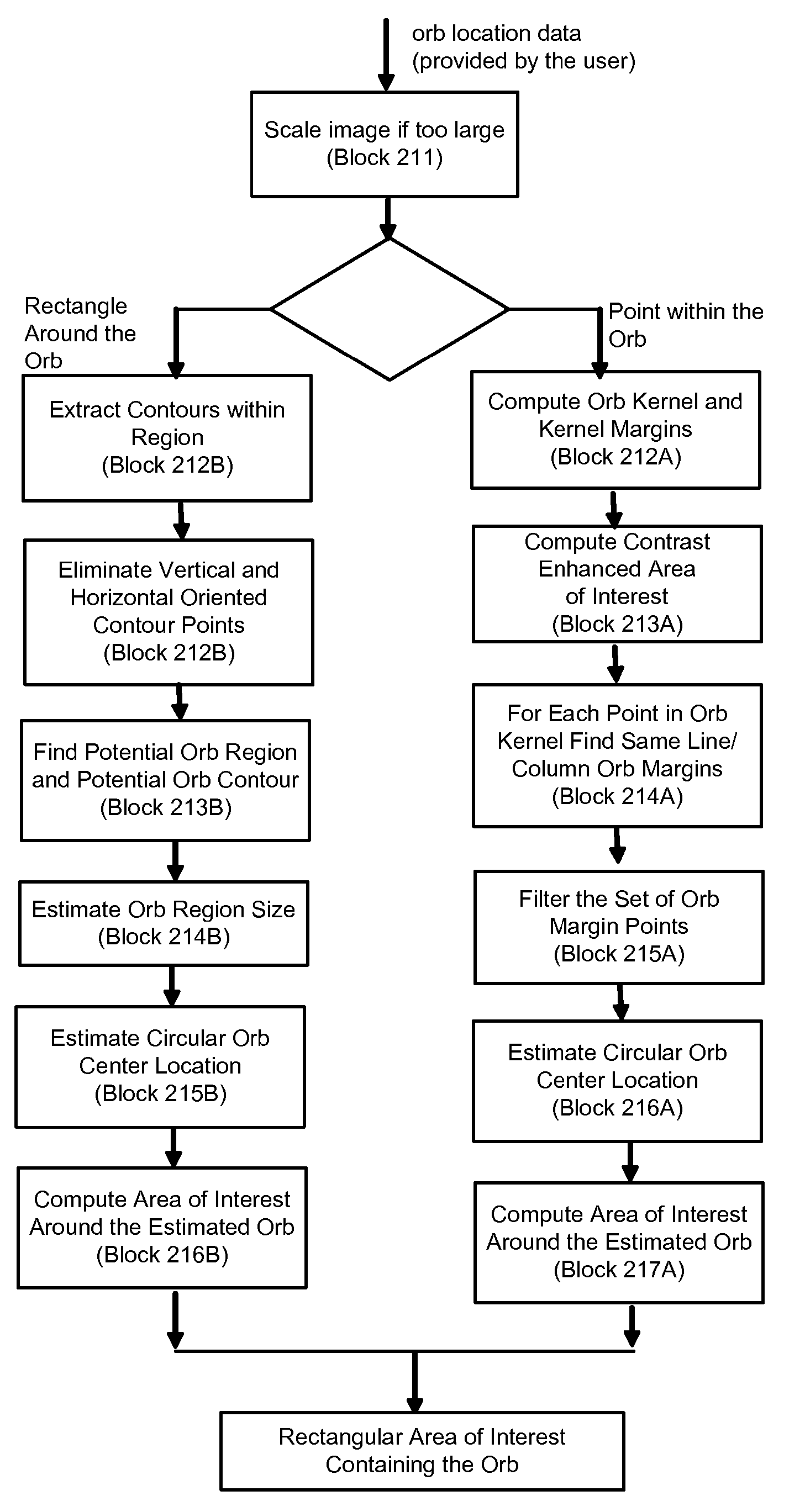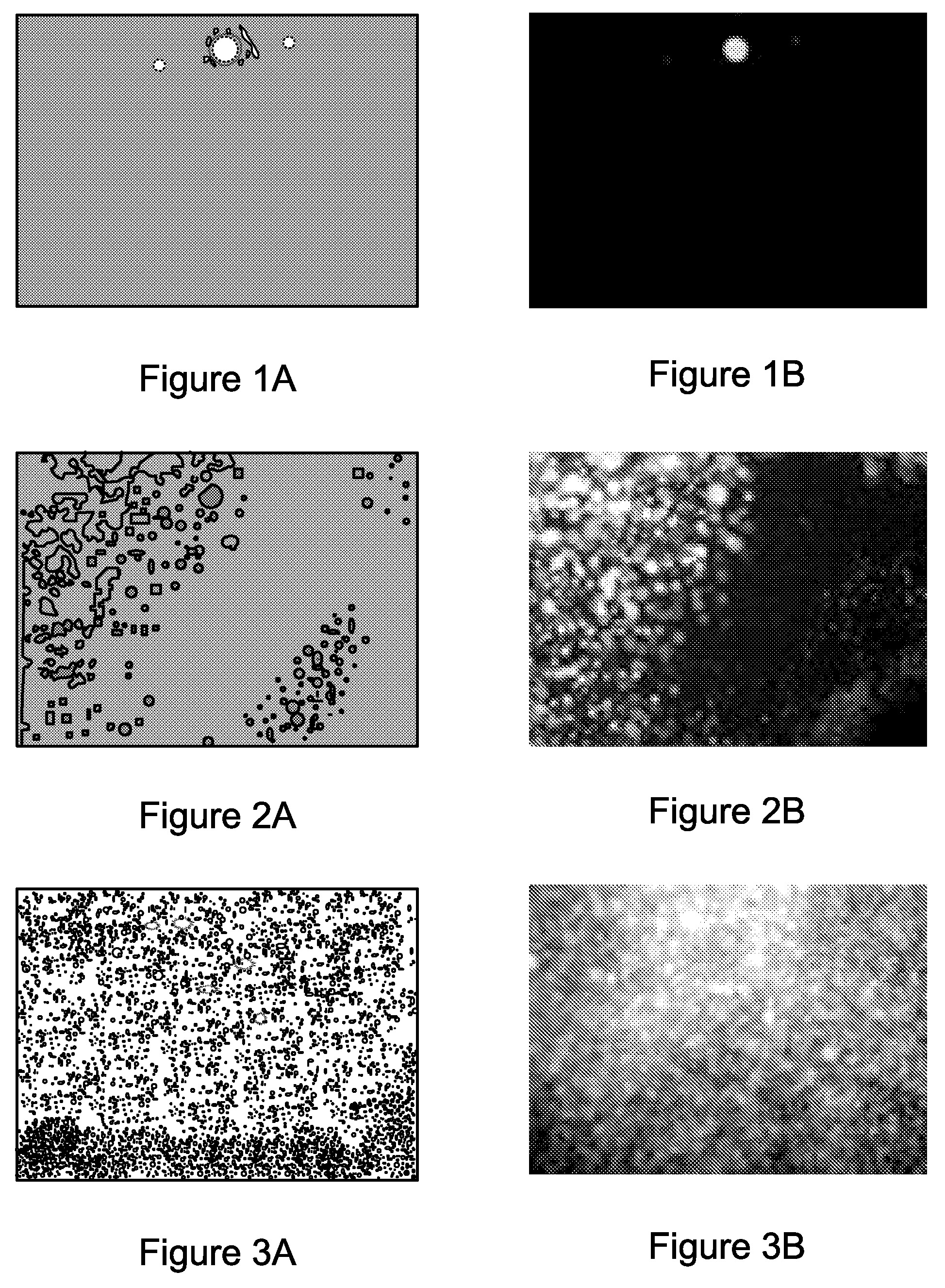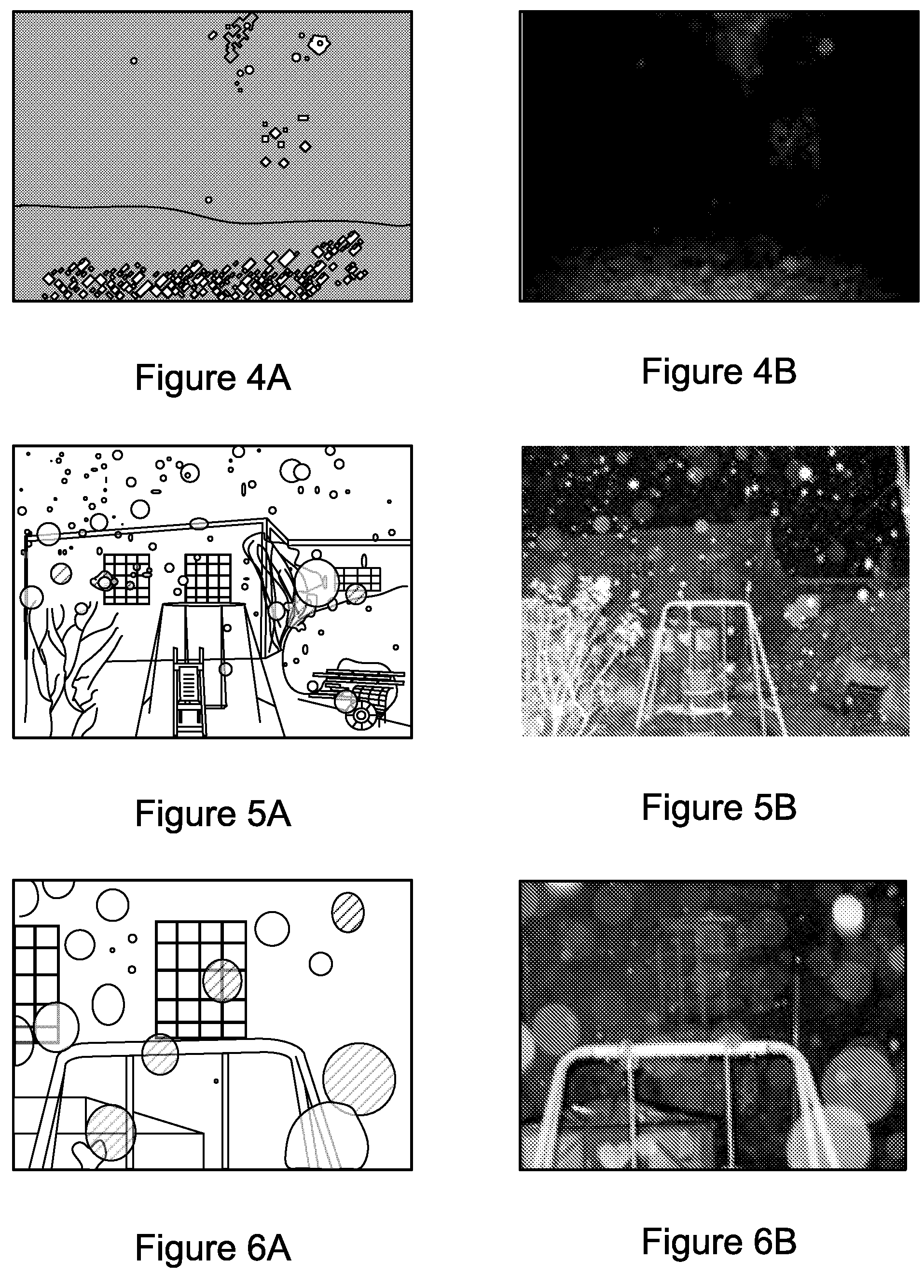Detection and Correction of Flash Artifacts from Airborne Particulates
a technology of airborne particulates and flash artifacts, applied in image enhancement, image analysis, instruments, etc., can solve the problems of reducing the visibility of inside pixels and edge pixels, affecting the paranormal belief in orbs, and affecting the perception of ghost hunters
- Summary
- Abstract
- Description
- Claims
- Application Information
AI Technical Summary
Benefits of technology
Problems solved by technology
Method used
Image
Examples
further embodiment
[0134] The orb detection algorithm can be decomposed into two parts, as illustrated in the flow diagram of FIG. 39. Block 21 that computes an rectangular area of interest containing the orb pointed by the user and Block 22 that computes the actual orb location. The input data used by the detection algorithm is the data provided by the user (as output of Block 1) and the luminance (gray scale) component of the original color image that is to be processed.
[0135] The final orb detection data consists of a rectangular area of interest, that encompasses the orb with a predefined 50 pixel border (if the orb is located at least 50 pixels from the corresponding image margin, otherwise, the border equals the distance to the corresponding image margin) and a binary mask (within the area of interest), exactly covering the orb.
Detecting Area of Interest Containing an Orb
[0136] Detection of an area of interest containing an orb may be performed according to the flow diagram of FIG. 40. Block ...
PUM
 Login to View More
Login to View More Abstract
Description
Claims
Application Information
 Login to View More
Login to View More - R&D
- Intellectual Property
- Life Sciences
- Materials
- Tech Scout
- Unparalleled Data Quality
- Higher Quality Content
- 60% Fewer Hallucinations
Browse by: Latest US Patents, China's latest patents, Technical Efficacy Thesaurus, Application Domain, Technology Topic, Popular Technical Reports.
© 2025 PatSnap. All rights reserved.Legal|Privacy policy|Modern Slavery Act Transparency Statement|Sitemap|About US| Contact US: help@patsnap.com



